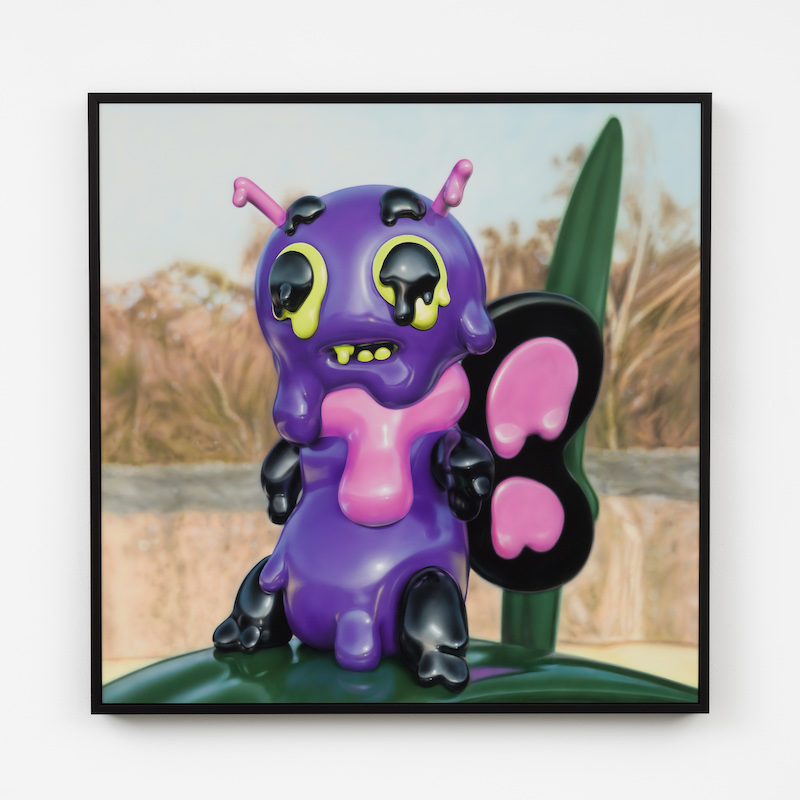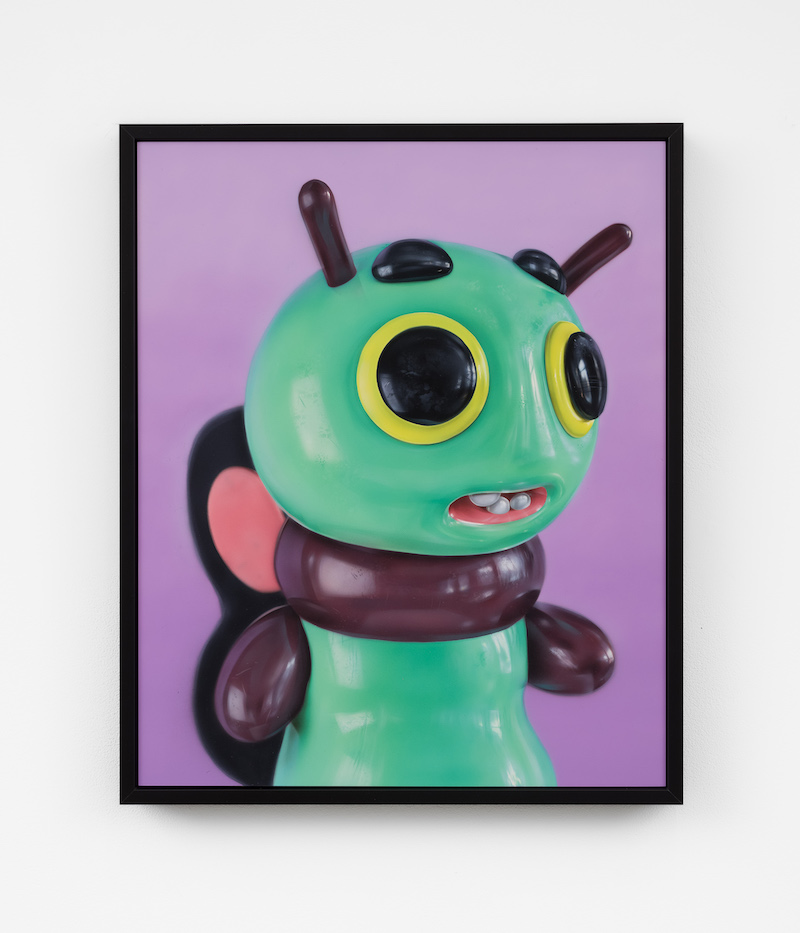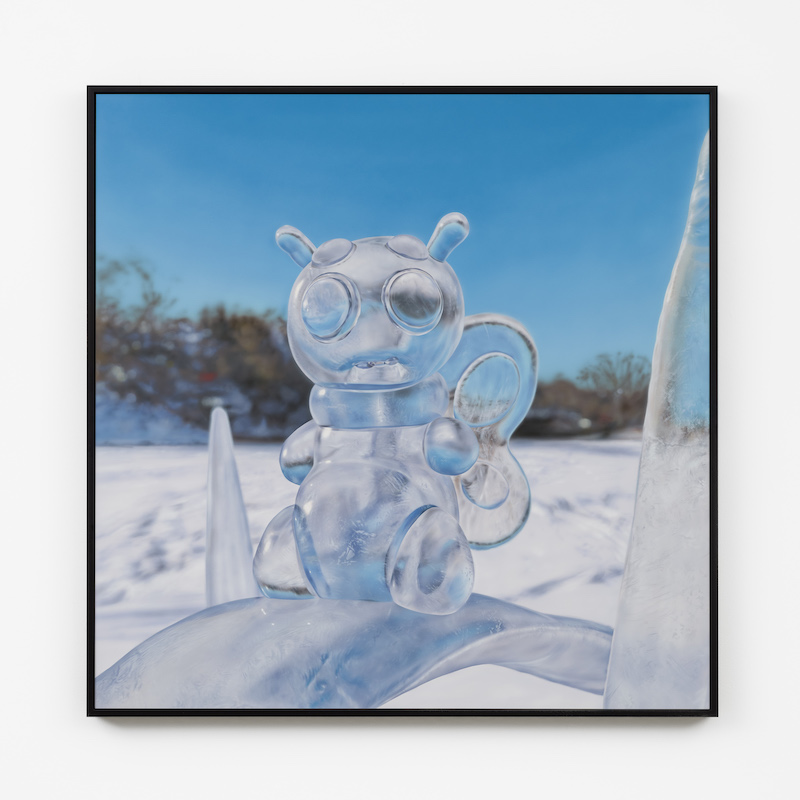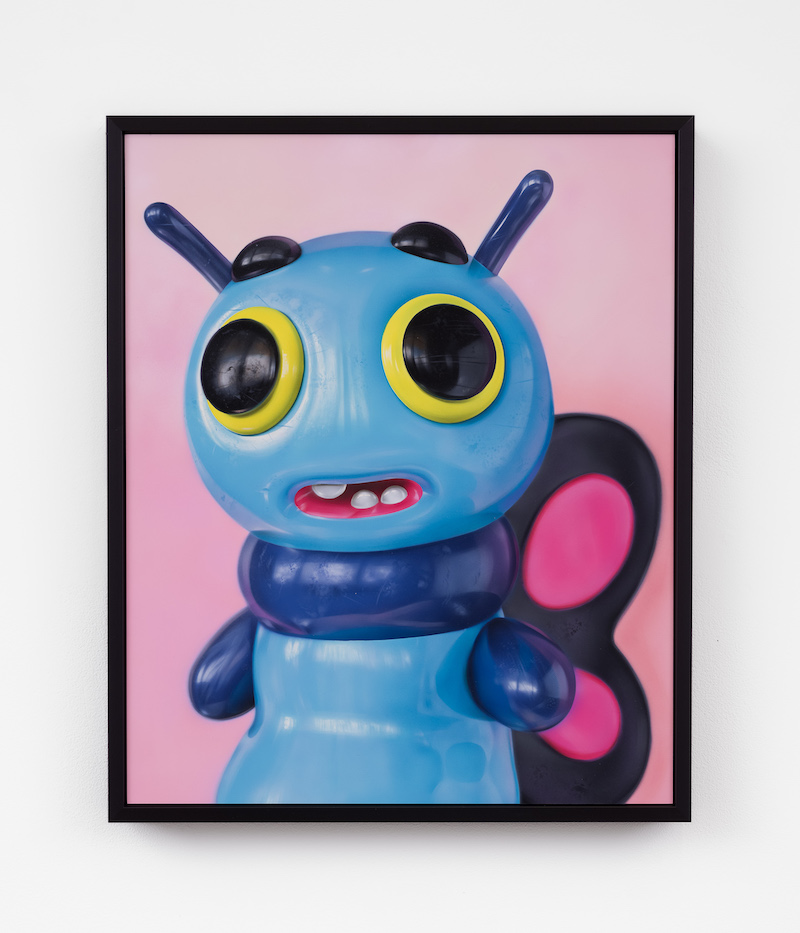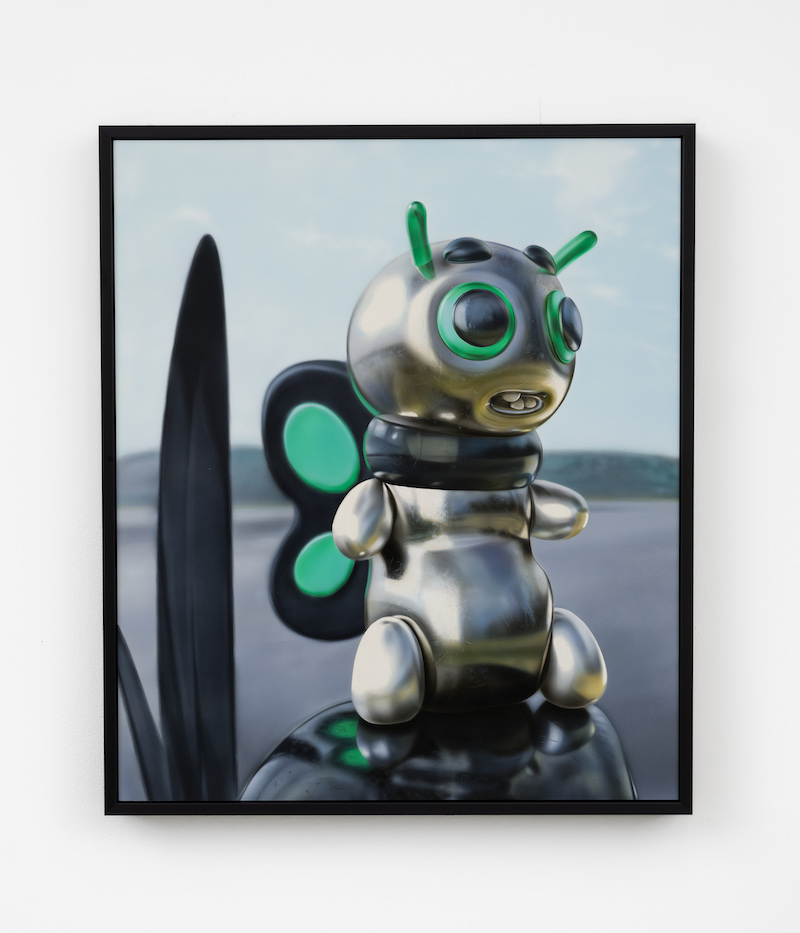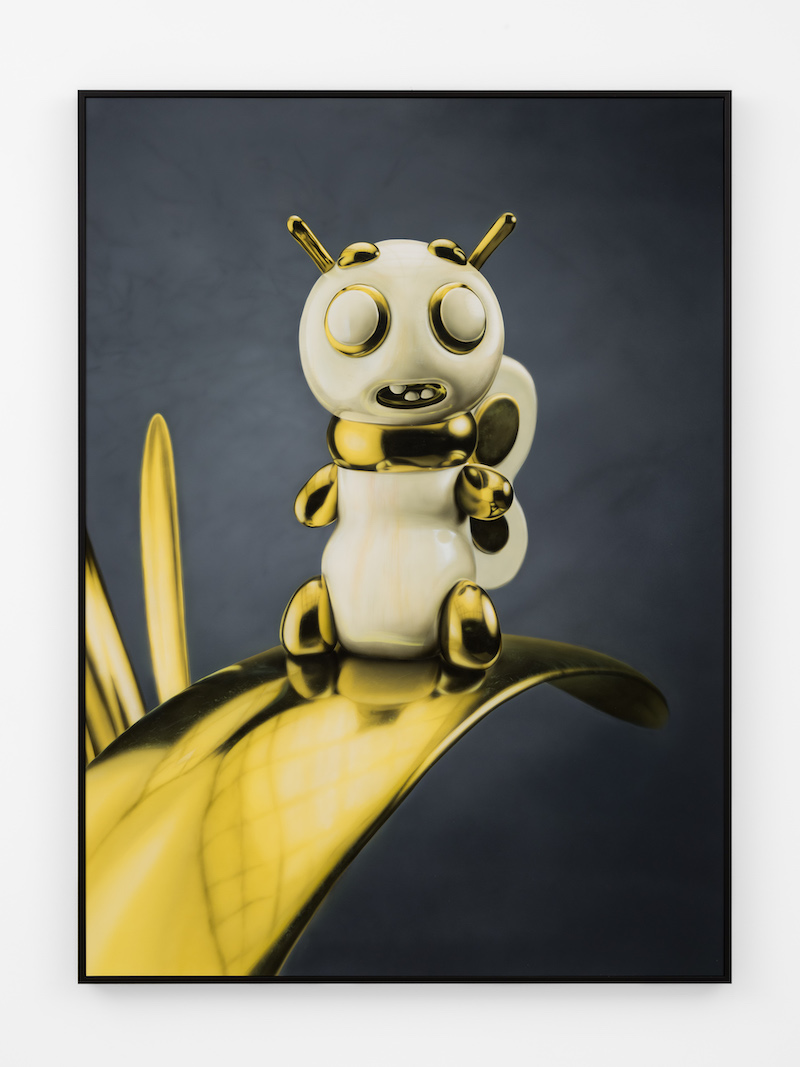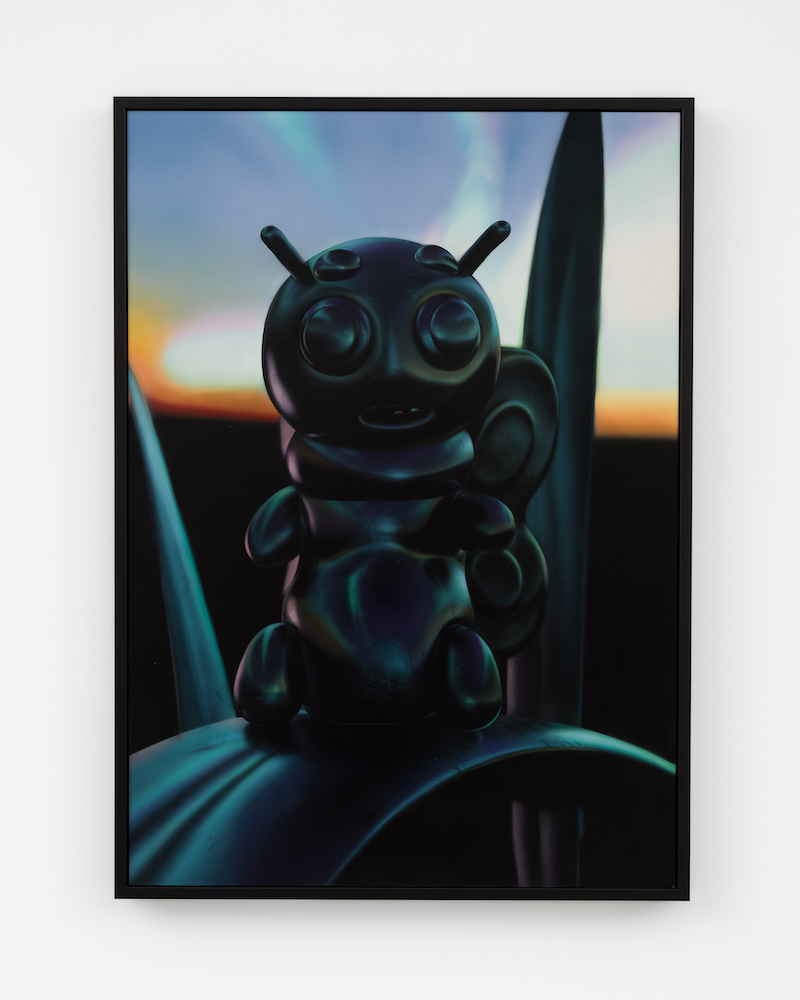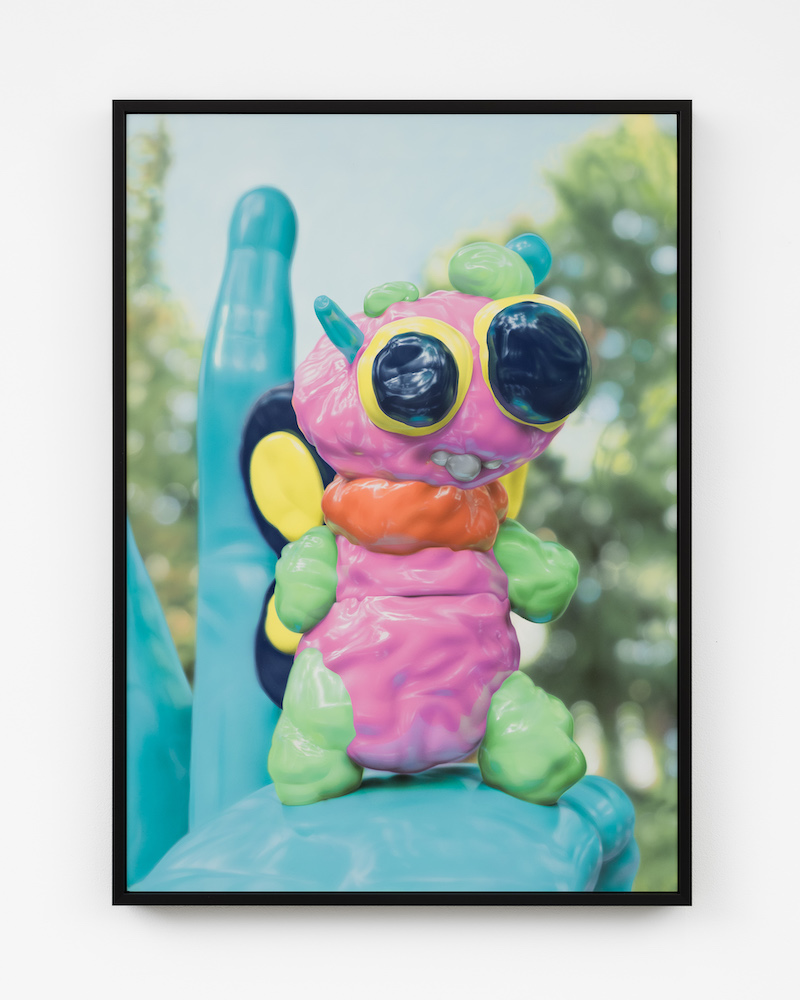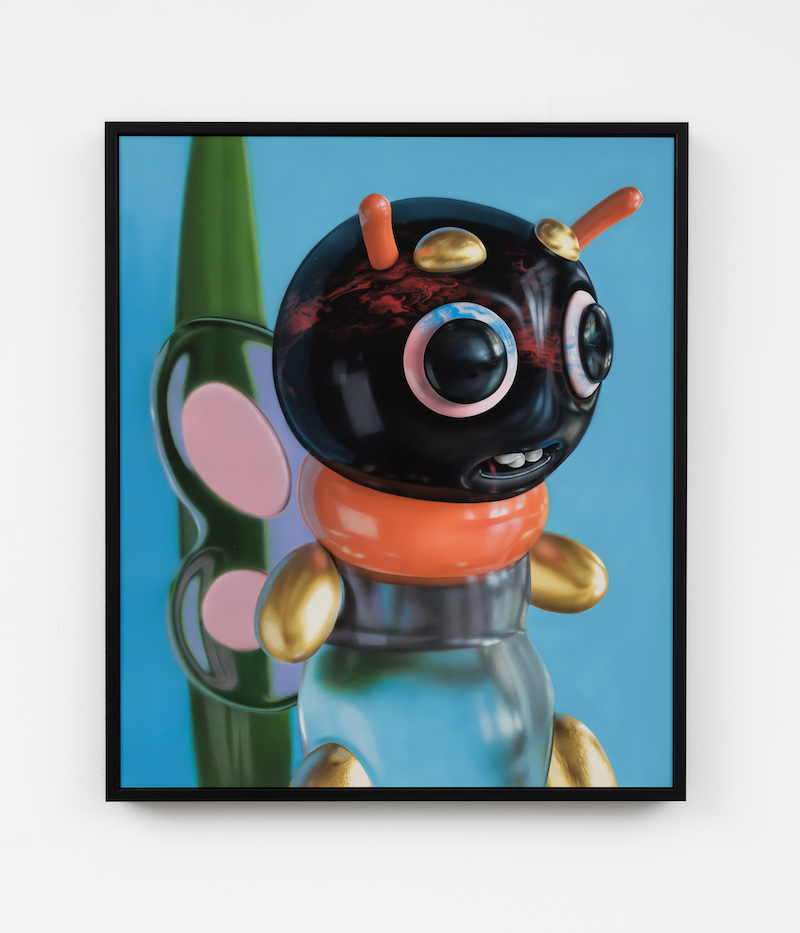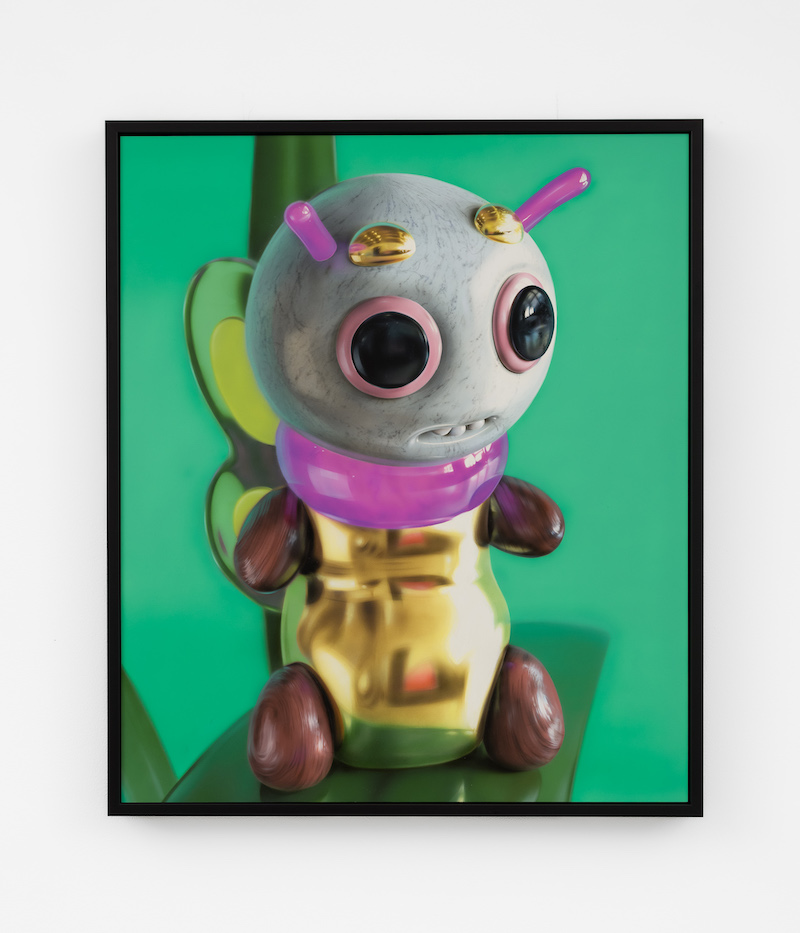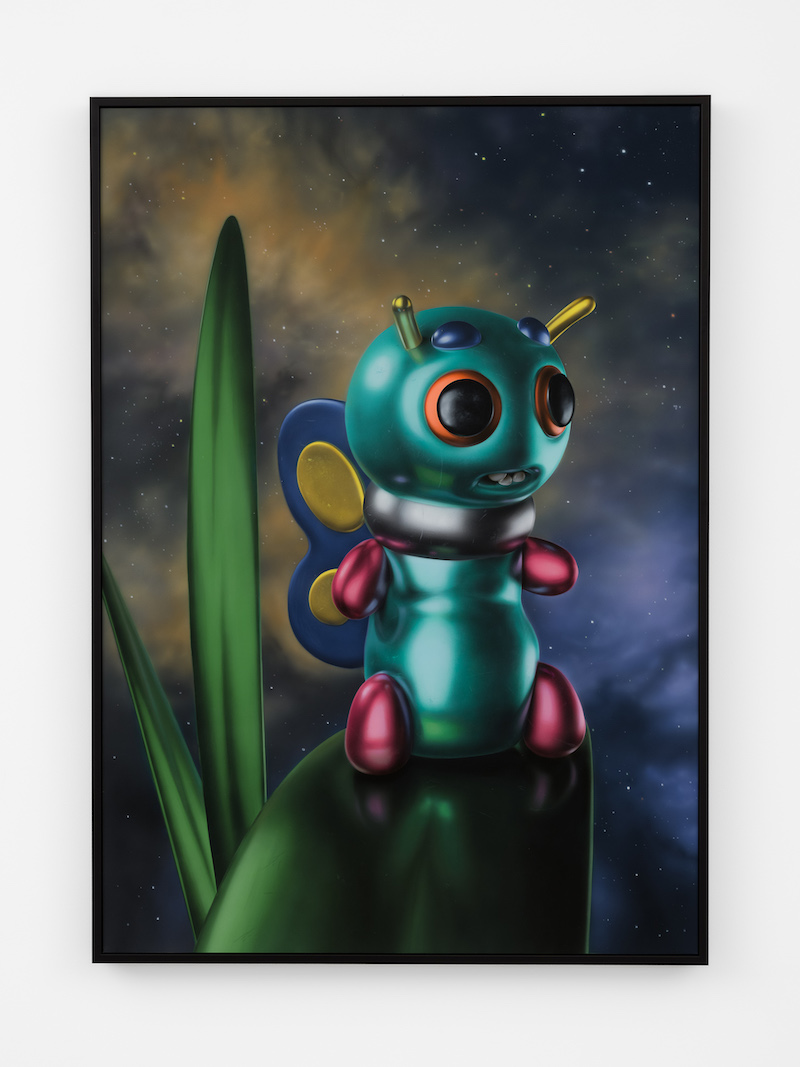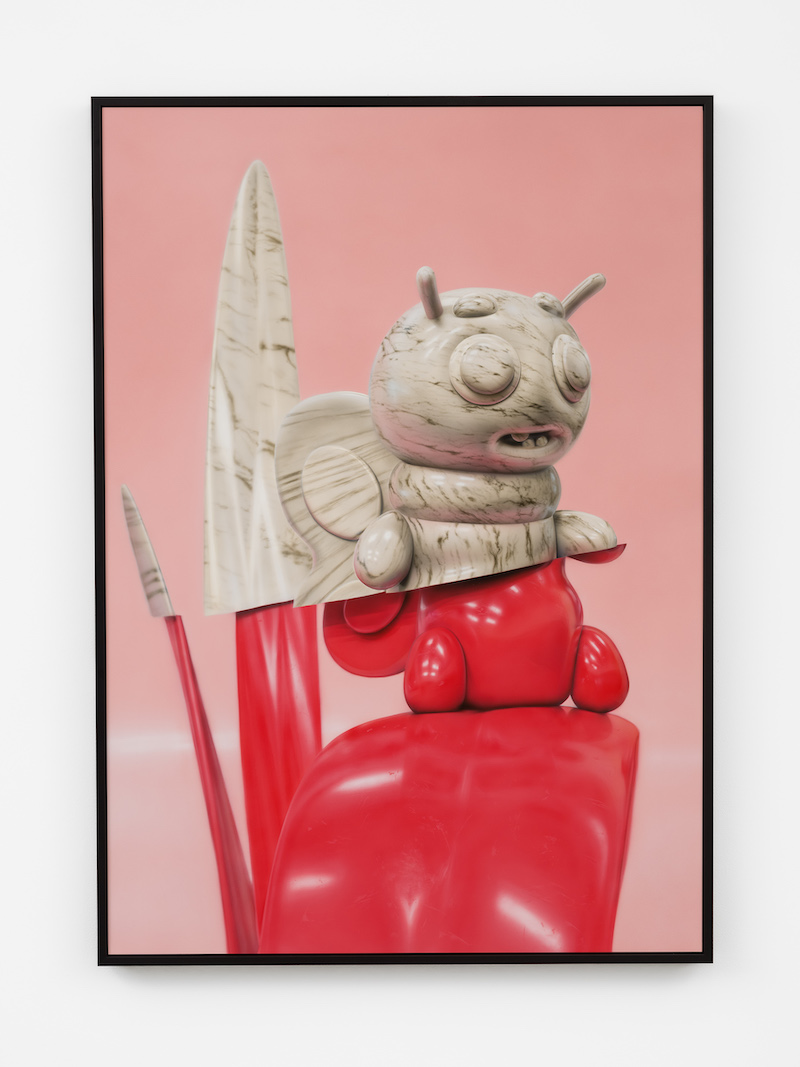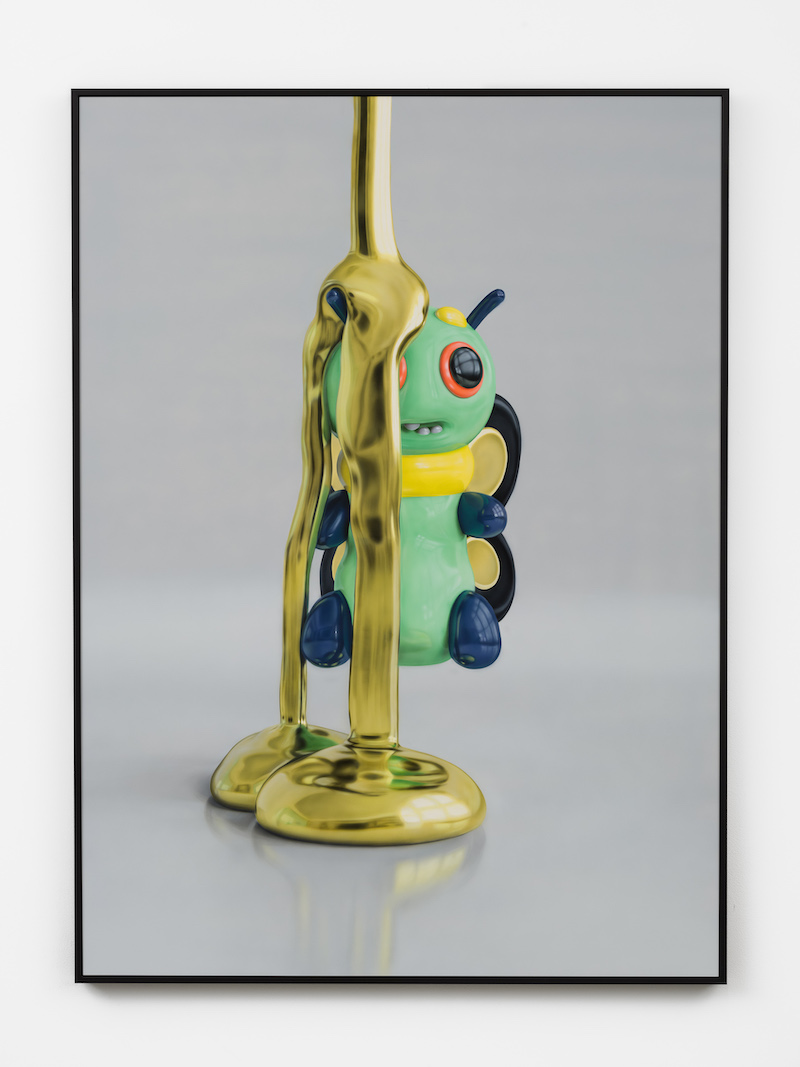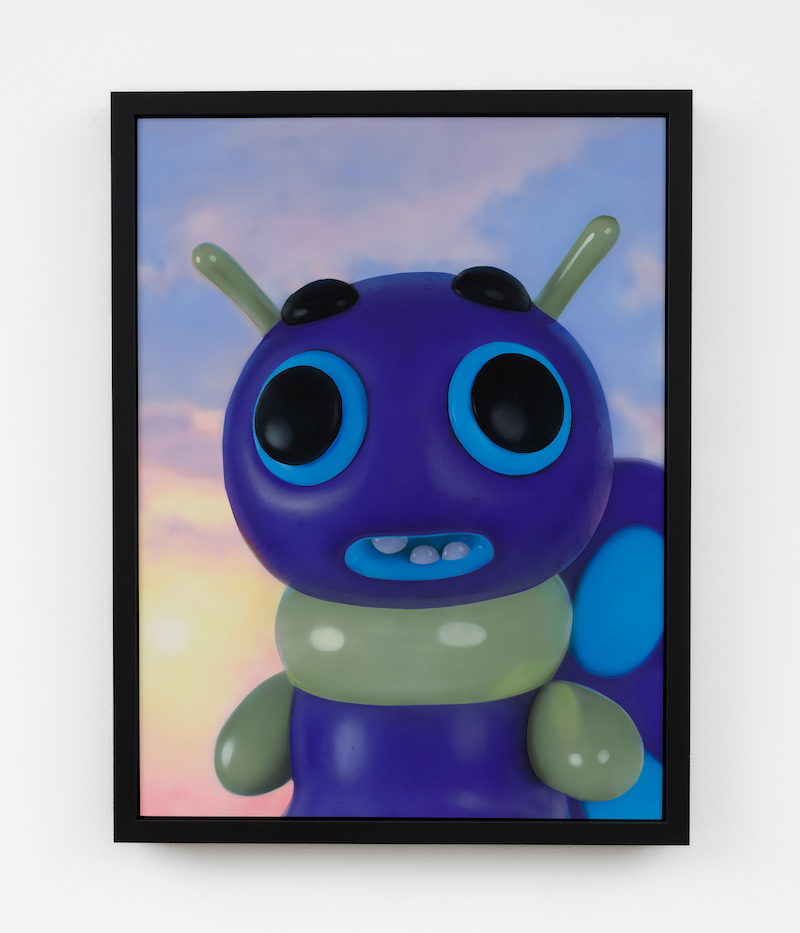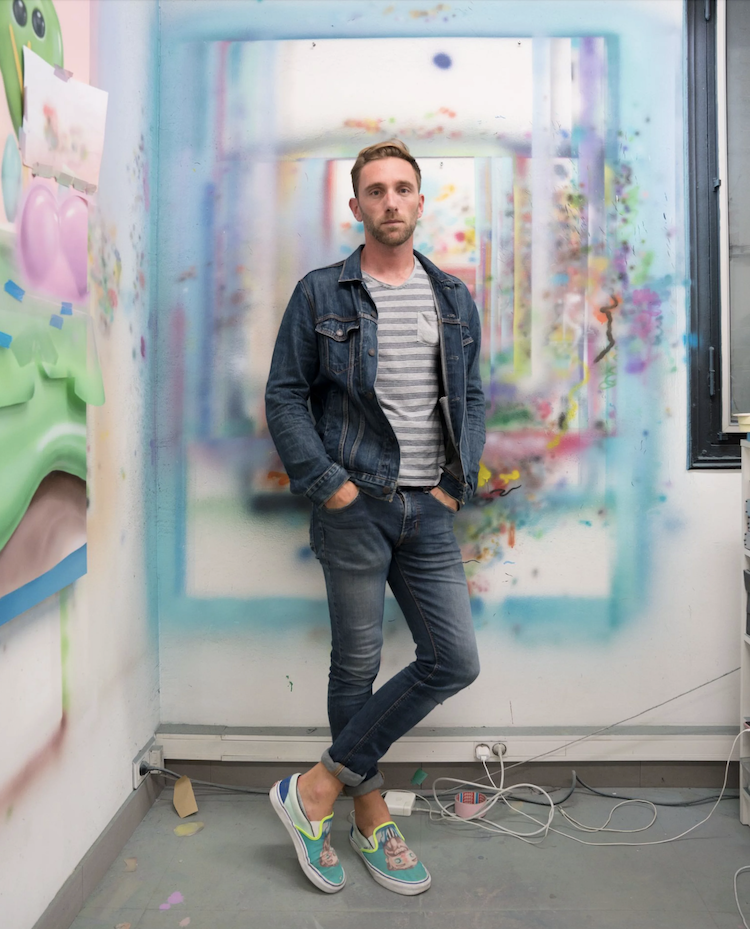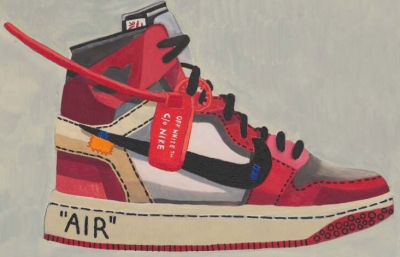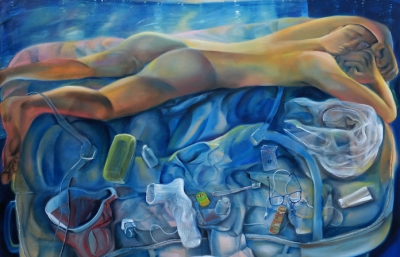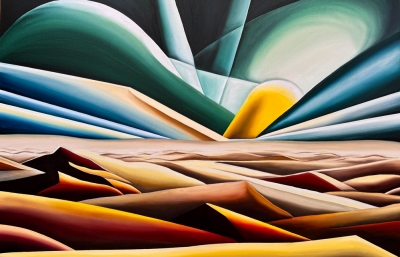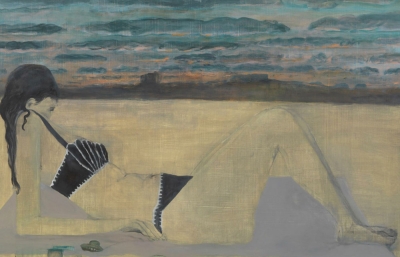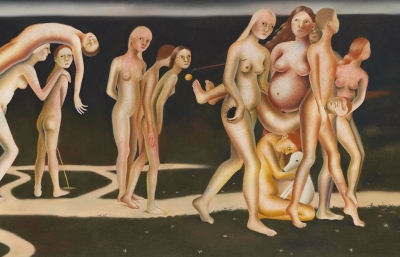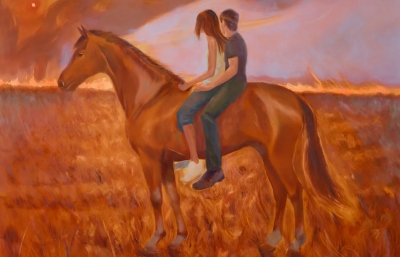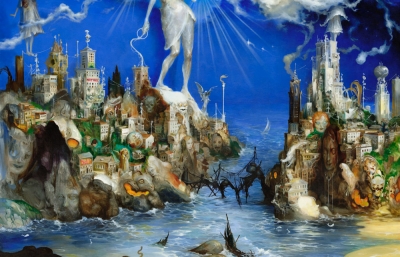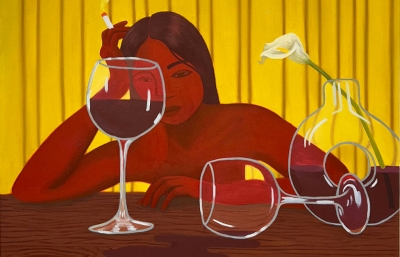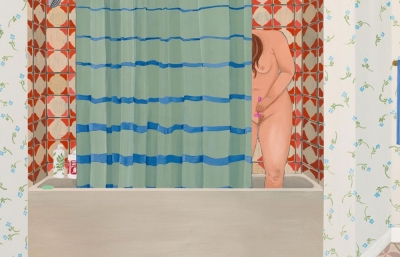Almine Rech is pleased to announce French artist César Piette’s second solo exhibition with the gallery, in which he applies his trademark style to a perennial subject of philosophy, literature and art: the humble butterfly. Since the ancient Egyptians, Greeks and Chinese, butterflies have served as a metaphor, and artists as varied as Katsushika Hokusai, Frida Kahlo, and Damien Hirst have used them to illustrate themes such as the potential for transformation as well as the brevity of life and the flight of the soul.
And while there are thousands of varieties of butterfly, no lepidopterist has ever captured one that quite resembles the creature in Piette’s paintings, slightly slumped on a blade of grass, a few teeth poking out of its open mouth. Piette depicts the winged insect in a variety of materials and textures: silver, colorful plastic, marble, ice, gold and ivory, and against varied backdrops: a single color, a hazy landscape, a starry sky. One is dripping as if melting, while another, in a witty touch, has a silver head with patches of blue paint, as though partially worn away — a painting of a painted thing, a brand-new object simulating the ravages of time.
Piette’s serial treatment emulates artists like Monet painting cathedrals or haystacks, or Cézanne depicting Mont Sainte-Victoire in Aix-sen-Provence (not far from where the artist lives, in the South of France). When working in series, artists focus on formal elements like composition, light, shape, and framing, creating multiple effects from a single subject. But while Monet or Cézanne had to move their easel to depict a different angle, or wait hours for varying light effects, Piette simply chooses his effects from a drop-down menu. Before becoming an artist, Piette worked in fields like illustration, comics, and video games. Dissatisfied with his early attempts at painting, he has said, “I decided to go extreme and do the worst painting I could” while embracing aspects of his past training, which led to his unique present style, which he has described as “color-saturated, illusionistic, without marks or textures, flat, cartoony, non-narrative, and self-referential,” adding, “This is unbearable for a lot of people.”
The artist first renders his subjects in monochrome using 3D software, then converts these digital files into physical objects using airbrushed acrylic paint, removing traces of the hand and creating what appear to be photorealistic renditions of toy-like human or animal figures, or improbably shiny landscapes. But what does it mean to create such “realistic” renditions of unreal people and things? His work partakes of a world of simulation that already dominates phenomena like movies and advertisements, perhaps to a greater extent than most viewers realize, says the artist. In his butterfly paintings, Piette depicts a timeless subject in a traditional representational mode after using a purely modern technique to simulate that which he represents.
“More and more, we live in a world of simulation, and I try to mimic software that tries to mimic reality,” says the artist.
Piette has appeared in a solo exhibition at Almine Rech London and in group exhibitions at the gallery’s New York, Paris, Shanghai, and Brussels locations. He has also appeared in group exhibitions at the Centre d’Art Contemporain Meymac, France, in 2022, and at the Museum of Museums, in Seattle, Washington, in 2021. His work has been featured in Juxtapoz Magazine and L’Officiel Art. He will appear in a group exhibition at Almine Rech London in October, during Frieze. —Brian Boucher



